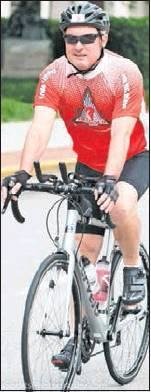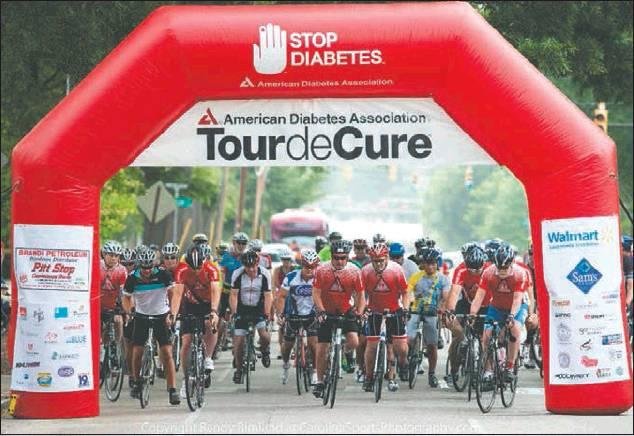Going the extra mile to find a diabetes cure
JerryBellune@yahoo.com
When he was 28 years old, a frightening thing happened to Mark Shelley.
His pancreas shut down.
You might wonder why that happened, why that would be …
This item is available in full to subscribers.
Subscribe to continue reading. Already a subscriber? Sign in
Get 50% of all subscriptions for a limited time. Subscribe today.
Please log in to continueNeed an account?
|
Going the extra mile to find a diabetes cure
When he was 28 years old, a frightening thing happened to Mark Shelley.
His pancreas shut down.
You might wonder why that happened, why that would be frightening, even what a pancreas is.
The pancreas is an organ in your abdomen behind your stomach. It produces enzymes and hormones that help you digest food.
One hormone is insulin. It regulates glucose in your body for energy, according to Healthline.com.
Think of insulin as a key to unlock your cells so they can use glucose for energy.
Mark’s pancreas quit making insulin. Glucose built up in his blood, leaving his cells starved for energy. That’s known as hyperglycemia.
Its symptoms include thirst, nausea, headaches and shortness of breath.
Low glucose, known as hypoglycemia, causes shakiness, dizziness and loss of consciousness. Both can become life-threatening.
Mark had Type 1 diabetes, often referred to as juvenile diabetes because it often occurs in childhood.
His immune system attacked the cells that produce insulin in his pancreas and left it unable to work.
What triggered that isn’t clear. You’re more likely to develop Type 1 if you have a family history of it.
About 5% of diabetics have Type 1 diabetes. Since the exact cause isn’t clear, Type 1 can’t be prevented nor cured, at least with any treatment known today.
Maybe one day we will know how to cure it.
That’s one reason why Mark will ride again in the local American Diabetes Association Tour de Cure fund raising event for diabetes research this weekend.
Mark is Lexington Medical Center’s award-winning Vice President of Marketing & Communications, and a leader in fund-raising.
“8 years ago I took up cycling to add more exercise to my routine,” he told me in his office on West Hospital Drive in West Columbia.
“I heard about the Tour de Cure Charity Ride and knew I wanted to be part of it. I’ve had Type 1 diabetes for 30 years so the ride had a great deal of meaning to me.”
About 9% of Lexington County residents – 27,000 people, more than the total population of Lexington or West Columbia – have some form of diabetes, said Christina Bickley of the area’s diabetes association chapter.
What would Mark advise those with a family history of diabetes to do?
“Learn the symptoms,” he said. “So often I hear that a person wasn’t aware the symptoms and ended up in the ER with blood sugar levels through the roof.
“Take care of yourself. Watch your diet and have a routine exercise schedule.”
Mark is training for another event – the Iron Ironman Triathlon in Augusta, Ga., Sunday, Sept. 29.
This requires you to swim 1.2 miles in the Savannah River, bike 56 miles and run 13.1 miles through Augusta.
Why do this to yourself?
“It’s on my bucket list,” Mark said.
Other items that may interest you










Comments
No comments on this item Please log in to comment by clicking here